By Daniel Mucinskas
The Global Citizens Initiative (GCI) is a non-profit dedicated to the empowerment of young people as global citizens to achieve positive change in the world. From July 27-August 4, 2018, GCI once again gathered a talented group of 28 high school students from around the world for a residential program focused on discussion-based learning, design thinking, and the development of “glocal” (think global, act local) service projects.
“Engage, Educate, Empower” below Global Citizens Initiative logo
As a part of each year’s summit, The Good Project’s framework of “good work,” defined by excellence, ethics, and engagement (the “3 Es”), is explored in plenary sessions and student-centered discussion based learning (Harkness™). This year, the three lectures concerned:
-Engagement – an examination of white privilege in the post-World War II United States through the story of one white family, including redlining practices from banks that exacerbated racial inequities and have left questions about how to engage with this historical legacy in American society today
-Ethics – the dilemmas and questions posed by advances in technology, such as social credit systems and live crime reporting, and the unresolved balance or “give and take” between science and ethics
-Excellence – thoughts on giving children the opportunity to freely explore the world without preconceptions, to make mistakes, and to come to their own conclusions about how to live an excellent life.
Following these sessions, we had the opportunity to interview three Fellows in attendance at the Summit about their learning goals, their ideas of global citizenship and the 3 Es, and their service projects.
Below is a summary of the conversation, edited for clarity and confidentiality.
Q: You all mentioned you were motivated to come to GCI after hearing about it from your peers. What are your friends saying about the program, and why did you think it would be a good fit for you?
Group photo of fellows with posters
Student 1: I feel there is less talk from my friend about the actual week of the Summit but more about what happens afterward. GCI is a community, and you have access to the resources and the skills to make an impact in the world.
Student 2: For me, it was the way my friend talked about the implementation of his service project.
Student 3: I researched it after my friends a year above me came. The focus resonated with me.
Q: I know you’re all still in the midst of the Summit, but what do you feel this experience has taught you so far?
3: We’re students from all around the world, which is eye-opening. I’m surrounded by people that want to make change, and we can learn from one another how to implement change in everyday life.
2: There aren’t many opportunities you get in life to be part of a community that is as diverse as the GCI Fellows. I can see that this program is special; you need access to a lot of resources in order to build something like this. I have had discussion-based classes back home at my school, but it is always one or two students who dominate the conversation. All the kids in this program are the ones who like to speak up; we are all the leaders in our classrooms back home, so I’m hearing many different perspectives I often don’t have access to.
1: I really enjoy the Harkness discussions, which are new to me. However, I have a concern. How does this one week make you into a “global citizen”?
3: It’s not solely about the time we spend here. The nine-day summit is preparation for the long “race.”
2: I came here with the misconception that the goal was to have a fully formed service project after 9 months. But now I disagree with that idea. This program is about the meaning of good global citizenship; the point is more about our paths and the time we spend with this cohort of Fellows than the final product we create.
Q: How has this experience helped develop your communication and creative thinking skills?
1: By watching people communicate, like the faculty and the other Fellows, I can emulate them as role models. The greatest asset of this program isn’t its educational model; it’s the people.
3: All of the speakers we are exposed to through this program share their advice with us, which gives us the opportunity to learn more efficiently.
2: The program has shown me that I have to operate with a certain level of humility. We are having an experience in which we are communicating with people from all over the world. We are all hoping to be leaders in the world in some way in the future, and as a part of being leaders, we should be able to communicate with people with whom we don’t have as much in common, and do it successfully.
1: I love the program, but I do wonder how different it will be from college.
2: In college, it’s easy to drift and end up only becoming friends with people you are comfortable with.
1: I just think that true pluralism takes a lot longer to develop than the nine days we are here.
3: That might be true. But this Summit was programmed for us to develop as much as possible. The pure purpose of this summit is to engage. I’ve never had a roommate, so having two roommates is such a new experience for me. I have learned so much about my comfort zone and about how to communicate on a basic level.
Q: How do this week’s experiences of creative thinking and communicating with others compares to experiences you’ve had at your own schools?
1: I’m privileged to be able to go to school [back home] where a lot of others are disadvantaged. But the teaching there is very linear. You aren’t supposed to have an opinion as a student.
3: This program is my school “on drugs.” It’s intensive. My school’s purpose is to do exactly what we are learning here, but I’m acquiring skills that are more utilitarian and applicable to my everyday life.
2: In my school, we talk extensively about ethics, identity, race, gender. But this program is about planning to taking tangible steps towards making the world better. We have discussions at my school that are often single perspective; since everyone agrees with one another already, it’s “preaching to the choir.” Here, every comment raises a new concern or standpoint I wouldn’t have in my own classroom.
Q: You have been exploring the themes of excellence, ethics, and engagement here as well. What do these topics mean to you?
1: They’re all intertwined. In order to feel connected with your work, you have to be engaged, and be excellent.
3: My sense of these terms has developed. For example, my understanding of being engaged has evolved because now I see in this Summit how engaged other people are in their work. Ethically, I am now able to see issues in a different way. For excellence, I see it all around me, being surrounded by Fellows who are leaders in their schools. We have a responsibility to be excellent in the world.
2: I’m still struggling with excellence, but the level of engagement here is amazing. I’ll never have a class of students like this. It’s all concentrated, so we have to make the most of our time. In terms of ethics, it’s become sort of a buzzword, something to be incorporated into a business model. But this entire Summit is built on a foundation of ethics. You can’t be a global citizen without being ethical.
Q: What is being ethical?
1: Ethics is very relative. We had a discussion this week about our relationships with nature and eating meat. Someone from the west might think one thing, and someone from the east another. I’m leaning more towards a deontological approach to ethics myself, looking at whether our actions are good.
2: I think it’s about being empathetic. You need to have the capacity to think and act with empathy, keeping other people and the implications of what we say and do in mind.
3: I’m still struggling with this because it’s such an abstract concept. If I say one thing, it won’t do it justice, so I’d prefer not to answer.
Q: Tell me a little about the projects you are designing.
1: I have a social enterprise working with child cancer patients on crafts to help them pay for their chemotherapy treatments. I want to build a website and help teach them entrepreneurship skills.
2: The problem I am trying to overcome is bridging of different communities in in my city. People tend to forget how segregated it is and how little interaction there is between different communities. There is a lack of understanding and empathy, and a very large gap between public education and elite private education. We are grappling at my private school with how we can provide a good education when in some ways we are damaging public education. My project is a school partnership model between my school and a public school, involving mentorship and exchanges.
3: My country has been accepting a lot of refugees from Syria. Young female refugees from Syria are at a vulnerable place in their lives. Sexism does exist in the world, and because of their refugee status, it’s amplified. I currently teach English to these refugees, and many women are not allowed to enter the classroom because there are men present. I want to create a space to connect young female refugees with career counselors and college counselors so that they can continue their education, and also have access to therapists to deal with trauma.
Q: What does it mean to do good in the world, or to have an impact in the world?
3: To contribute as much as possible. That can mean many things: making people happy, using your time efficiently, or doing what you do wholeheartedly. Get out of your comfort zone and overstep the boundaries you have set for yourself. Grow. If an individual sets of out to grow, that’s good.
1: If I were to think about doing good for the world, it’s not about the community, or your country; it’s about the world. We are stewards of the earth, and we need to leave it better than we found it. If I’m a citizen of one country, I might go and exploit another for the gain of my countrymen. But that’s not being a good global citizen.
2: Doing good goes beyond yourself. It’s education and empowerment. Those are words that come to mind. If you’re going to have an impact, providing education and empowerment to people so that they can also do good seems like a sustainable path.
1: But I don’t think we should confine our ideas to people. If I go and plant trees, that’s good for the planet. Doing good can be anything and anyone.
2: Yes, it’s impacting the world as a whole for the better.









